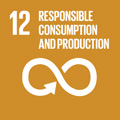- Docente: Alberto Fregni
- Credits: 9
- SSD: ING-IND/22
- Language: Italian
- Moduli: Alberto Fregni (Modulo 1) Laura Sisti (Modulo 2)
- Teaching Mode: In-person learning (entirely or partially) (Modulo 1); In-person learning (entirely or partially) (Modulo 2)
- Campus: Ravenna
- Corso: First cycle degree programme (L) in Building Engineering (cod. 9199)
Learning outcomes
During the course, the basic principles of chemistry and stoichiometry, the chemical and structural characteristics of matter and the energetic and kinetic aspects of chemical transformations will be illustrated.
Moreover, students learn the main physical and mechanical properties of main building materials, how to select them as function of their durability and working life in different environments.
Course contents
Chemistry Unit (40 h)
Atomic structure of matter.
Electronic structure of atoms and periodicity of atomic properties
Chemical bonds: ionic, covalent and metallic bonds. Weak interactions.
Stoichiometry, chemical reactions and redox.
Nomenclature of inorganic compounds
States of matter: gases, ideal gas law, mixture of gases and real gases. Liquid state: solutions and measures of concentration. Solids: kinds of crystals. Structures and properties of ionic, molecular, covalent and metallic solids.
Thermochemistry: Hess's Law of heat.
Ionic equilibria in acqueous solutions. Acids and bases. pH determination.
Material Science (50 h)
Introduction to Materials Science. Properties of materials, physical-mechanical performances of materials: microstructure, stress-strain diagram, Young modulus, elastic and plastic strain, fracture, creep.
Ceramic materials: Technology, mechanical properties and performance, durability and degradation. Bricks, ceramic tiles
Binders: Hydraulic and non-hydraulic binders: gypsum, lime, Portland cement. Types of cement according to the UNI EN 197-1 standard. Mechanical performances of the cement according to the UNI EN 196-1 standard.
Concrete: main components, mix design, properties of fresh and hardened-state concrete. Tests on fresh concrete in building site, characteristic compressive strength (Rck).
Condensed phase equilibria: Two-component status diagrams. Characteristics of eutectic alloys. Lever rule.
Metals: Steel production technology, Fe-C state diagram, thermal treatment of steels, stainless steels.
Polymeric materials: thermoplastic and thermosetting polymers, main properties of polymeric materials.
Readings/Bibliography
Chemistry unit
P. Atkins, L. Jones. Principi di Chimica. Zanichelli
R. Chang. Fondamenti di Chimica Generale. McGraw Hill
Material science unit
L. Bertolini – Materiali da costruzione Volume primo – Ed. Città Studi
V. Alunno Rossetti - Il Calcestruzzo. Materiali e Tecnologie - Ed. McGraw-Hill, Milano
W. D. Callister Jr., D. G. Rethwisch – Scienza ed Ingegneria dei Materiali – EdiSES
W. F. Smith, J. Hashemi - Scienza e Tecnologia dei Materiali 4° Ed. - McGraw-Hill, Milano
Teaching methods
Frontal lessons and exercises. During the lessons will be carried out exercises of the same type and difficulty than those that will be submitted to the students during the exam.
The methods of delivering the lessons (in presence or in mixed mode) will be detailed as soon as possible according to the directives that will be communicated by the University structures.
Assessment methods
The examination is divided into two separate verification tests: one of chemistry and one of materials technology.
The chemistry test consists of a written test (duration 2h) with multiple choice questions, open questions and numerical exercises, according to the course contents described above.
The test of Materials Technology consists of an written test (duration 2h) divided into two questions mainly concerning the topics most directly related to construction materials, and supplemented by a numerical exercise of the same type of those carried out during the lessons.
During the written test the use of books, notes and any type of electronic support (smartphone, tablet or similar) is not allowed.
Students who wish to improve the positive result (at least 18/30) obtained in the written test, can, at their discretion, take an integrative oral examination, consisting of a review of the written output and questions on the fundamental principles of Chemistry.
The final result, achieved if both the chemistry and materials technology tests result at least sufficient, will be defined by the average of the results obtained in the two tests.
Although it is strongly recommended that the two tests are carried out in the shortest possible time, there is no time limit to complete the examination in its two parts.
Teaching tools
Overhead projector. The material used during the lessons is available online to the students.
For a better use of the lessons, this material should be printed and taken to class.
The material provided to the students, even if supplemented by the notes taken in class, is not a substitute for the reference texts but is an aid for a better use of the lessons.
Office hours
See the website of Alberto Fregni
See the website of Laura Sisti
SDGs


This teaching activity contributes to the achievement of the Sustainable Development Goals of the UN 2030 Agenda.
